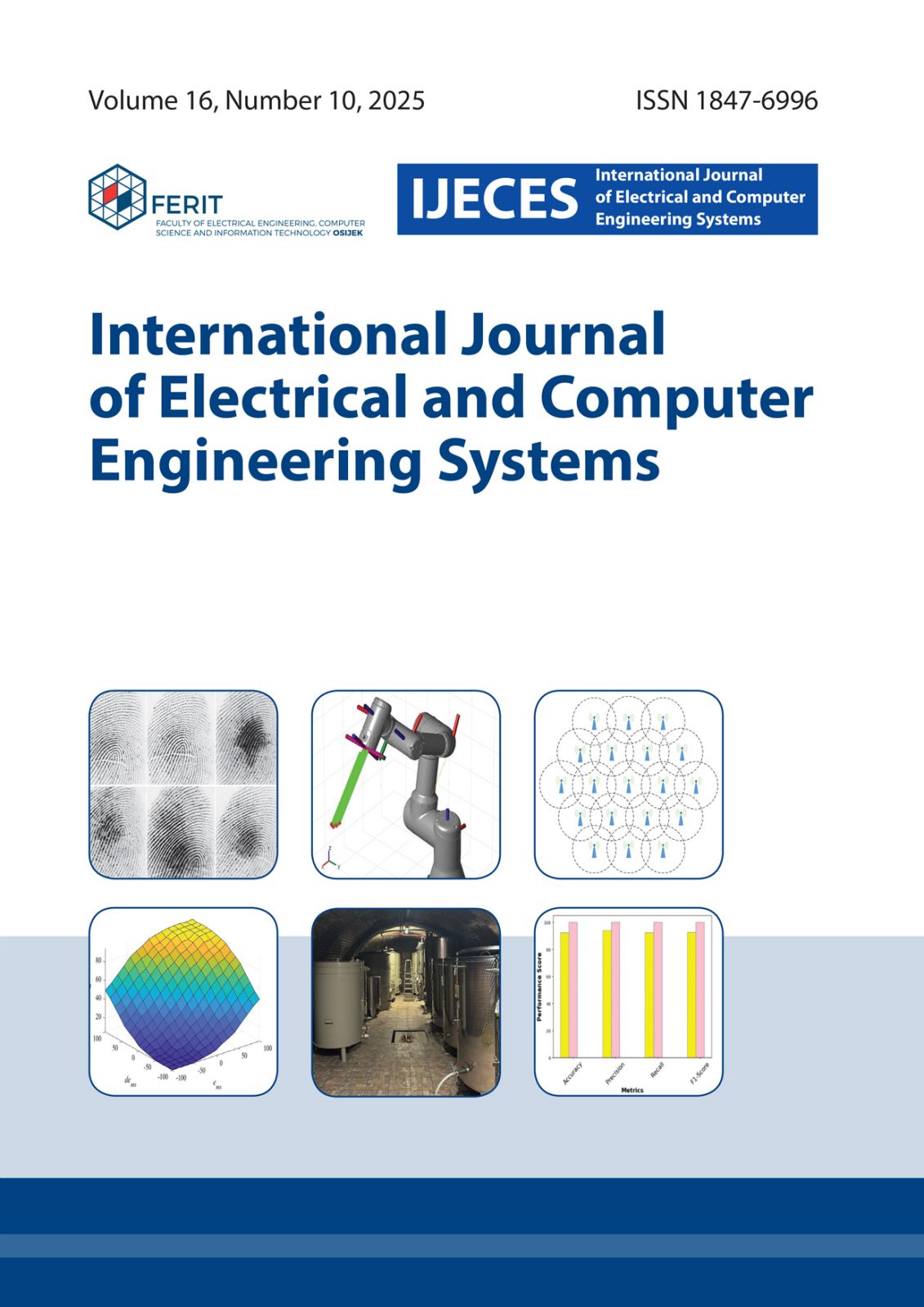Experimental Study and Modeling of Radio Wave Propagation for IoT in Underground Wine Cellars
DOI:
https://doi.org/10.32985/ijeces.16.10.7Keywords:
Internet of Things (IoT), underground wine cellar, radio wave propagation, path loss modelingAbstract
This paper presents the results of a study of radio wave propagation in underground wine cellars in the context of the optimal use of wireless communication systems for the application of the Internet of Things (IoT) in wine production environments. Electric field strength measurements were carried out in two subterranean line-of-sight (LOS) and non-line-of-sight (NLOS) conditions at 860 MHz, 2400 MHz, and 3600 MHz. The measured results were compared with predictions from seven existing propagation models, including site-general models (Free-space, ITU-R P.1238-13, ITU-R P.1411-12, ETSI TR 138 901 V16.1.0) and site-specific models (ITU-R P.1411-12, tunnel and knife-edge diffraction). Statistical analysis determined that the ITU-R P.1238-13 model, which estimates path loss in corridors, and the tunnel model have the best agreement with measurements in LOS conditions, with average Root Mean Square Error (RMSE) values of 2.8 dB and 3.56 dB, respectively. For the NLOS regions, the knife-edge diffraction model achieved the highest accuracy (average RMSE = 2.77 dB). Furthermore, based on the measurement results, the coefficients of the general path-loss model were adjusted to the data using the least-squares method, yielding RMSEs of 2.02 dB for LOS and 2.65 dB for NLOS conditions. The analysis showed that combining the ITU-R P.1238-13 or tunnel model for LOS conditions with a diffraction-based model for NLOS conditions provides a good basis for modeling radio propagation in subterranean wine cellars. These findings support the design of efficient and robust IoT communication networks in winery environments.
Downloads
Published
How to Cite
Issue
Section
License
Copyright (c) 2025 International Journal of Electrical and Computer Engineering Systems

This work is licensed under a Creative Commons Attribution-NonCommercial-NoDerivatives 4.0 International License.


